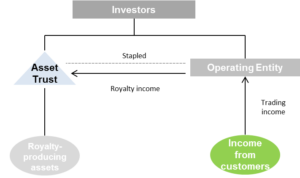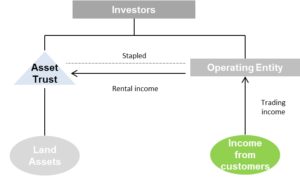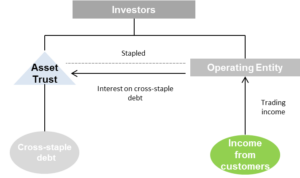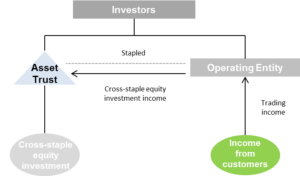
Many tenants under retail or commercial leases don’t realise the extent of their obligations once their lease comes to an end. De-fits and make-goods can be costly, so knowing your obligations before you sign your lease is key.
Make-good or de-fit?
Most leases say that once the lease ends, the tenant must leave the leased premises in a certain state.
There are many different terms that can be used, including ‘de-fit’, ‘make-good’, ‘refurbish’ or ‘redecorate’. The lease will detail exactly what needs to be done. This can include one or more of the following:
- Leaving the premises clean, tidy and in good repair.
- The removal of your fixtures, fittings, signage and equipment.
- Repainting the premises and replacing floor coverings.
- Reconfiguring the premises to its original layout.
- Stripping the premises back to a bare base-shell.
Even if you’ve installed a $100,000 fit-out in excellent condition, you may still be required to remove it.
Landlords may sometimes allow you to leave the premises as-is, but this is not common and unless the lease says otherwise, it’s the landlord’s choice to make. They may be willing to grant you this concession if they believe the current fit-out is in good condition and would be a selling point to secure a new tenant. However, even though you may consider your fit-out to add value to the premises, a new tenant may want a different look and layout. This is especially so if the use of the premises may change, for example, from a café to a clothing store.
Some landlords may be willing to accept a predetermined de-fit fee and handle the works themselves, saving you from carrying out the de-fit yourself. This should be discussed well in advance though.
Plan ahead
It’s essential to engage a solicitor to negotiate your lease before you sign it. Leases are always up for negotiation and a reasonable compromise can often be reached. Consider the following:
- The lease may require a ‘bare shell’ state. This could instead be changed to be the same state as back when the lease started. That means you would only need to re-alter any changes you’ve made during your time as tenant, saving you from removing anything installed before your lease started.
- Leases often refer to returning things to their ‘original condition’. Your interpretation of ‘original’ may be the condition when your lease started, but the landlord may consider it to mean before a previous tenant took over. For example, the landlord may expect you to remove the kitchen installed by the former tenant who you bought the business from. You should clarify the meaning of ‘original’ in the lease.
- Did the landlord give you a fit-out contribution when your lease began? You may wish to ask that your make-good won’t extend to removing anything the landlord paid for.
- Avoid the landlord having a broad discretion to direct you to do ‘any’ works they require. Try to narrow this down to a particular list of things.
- It’s good practice for you to take photos and make a written record of the state of the premises before or when your lease started. That can save an argument in the future about whether a door or wall was there or not.
Consequences of not complying
Failing to comply with your make-good obligations will entitle the landlord to a number of different options depending on your lease. These can include the landlord:
- being entitled to treat anything left in the premises as abandoned, meaning they become the owner;
- doing the make-good themselves and sending you the bill (and then suing you and any guarantors if the bill isn’t paid); and/or
- continuing to charge you rent until the make-good is complete to their satisfaction.
Always remember the security bond or bank guarantee that you gave the landlord when you signed the lease. Leases often say that landlords only need to give this back once the lease ends and they are satisfied with your make-good. If you fail to do your make-good then the landlord could apply your security towards doing it themselves.
What if you’re a franchisee?
If you’re a franchisee then you have an extra set of considerations to take into account.
Franchisees often assume that their franchisor will purchase their business at the expiry of the franchise agreement and take over the lease, or pay the franchisee for their fixtures. A franchisor has no obligation to do this, unless expressly stated in the franchise agreement.
We often hear franchisees say “the franchisor will not want this shop to close – they will pay for our equipment”. Then, franchisees discover that the franchisor does not want the shop. A franchisee should take this into account before deciding not to renew a franchise. Rarely will a franchisor pay market value for a business including a goodwill component. They may pay either the written down value for the equipment or market value but that will not be much. Equipment that cost a lot to install (in some cases hundreds of thousands) may only bring $5,000 when valued as second-hand equipment.
Some franchisees may be lucky and have a franchisor willing to purchase their business, take over their lease or perhaps purchase their second-hand equipment at its market value, saving the obligation to de-fit and make-good the premises.
If the franchisor doesn’t elect to do this, then your franchise agreement will generally require you to de-badge your premises when the agreement ends. That means all identifying features unique to the franchise system must go. Even though your landlord may be fine with you leaving the premises as-is, your franchisor may require the colour scheme, fit-out, and even layout, to be changed.
Takeaways
A de-fit and make-good can be expensive, therefore a little thought and planning at the right time is essential.
The post What is a “Make-good”? appeared first on Rouse Lawyers.








